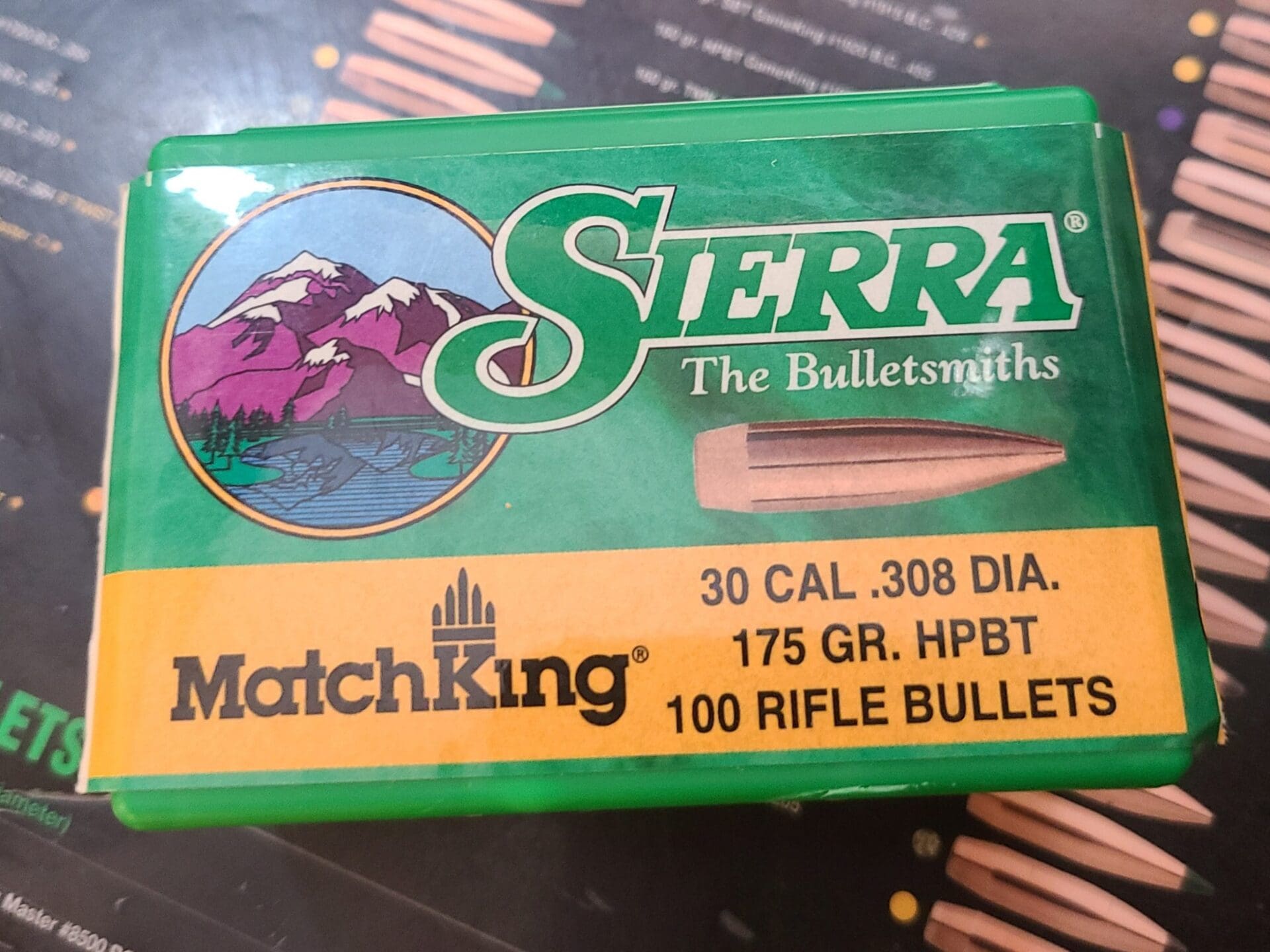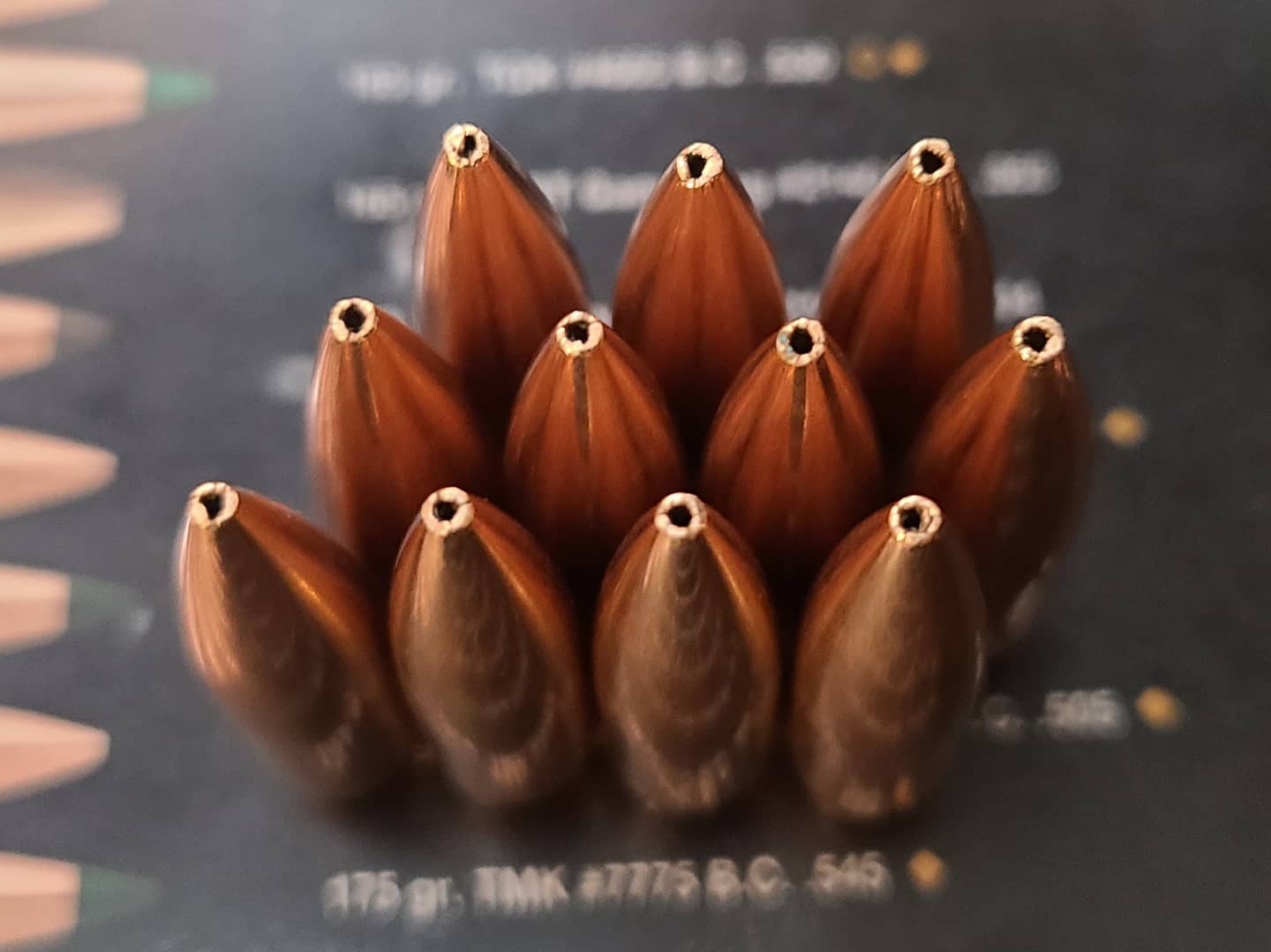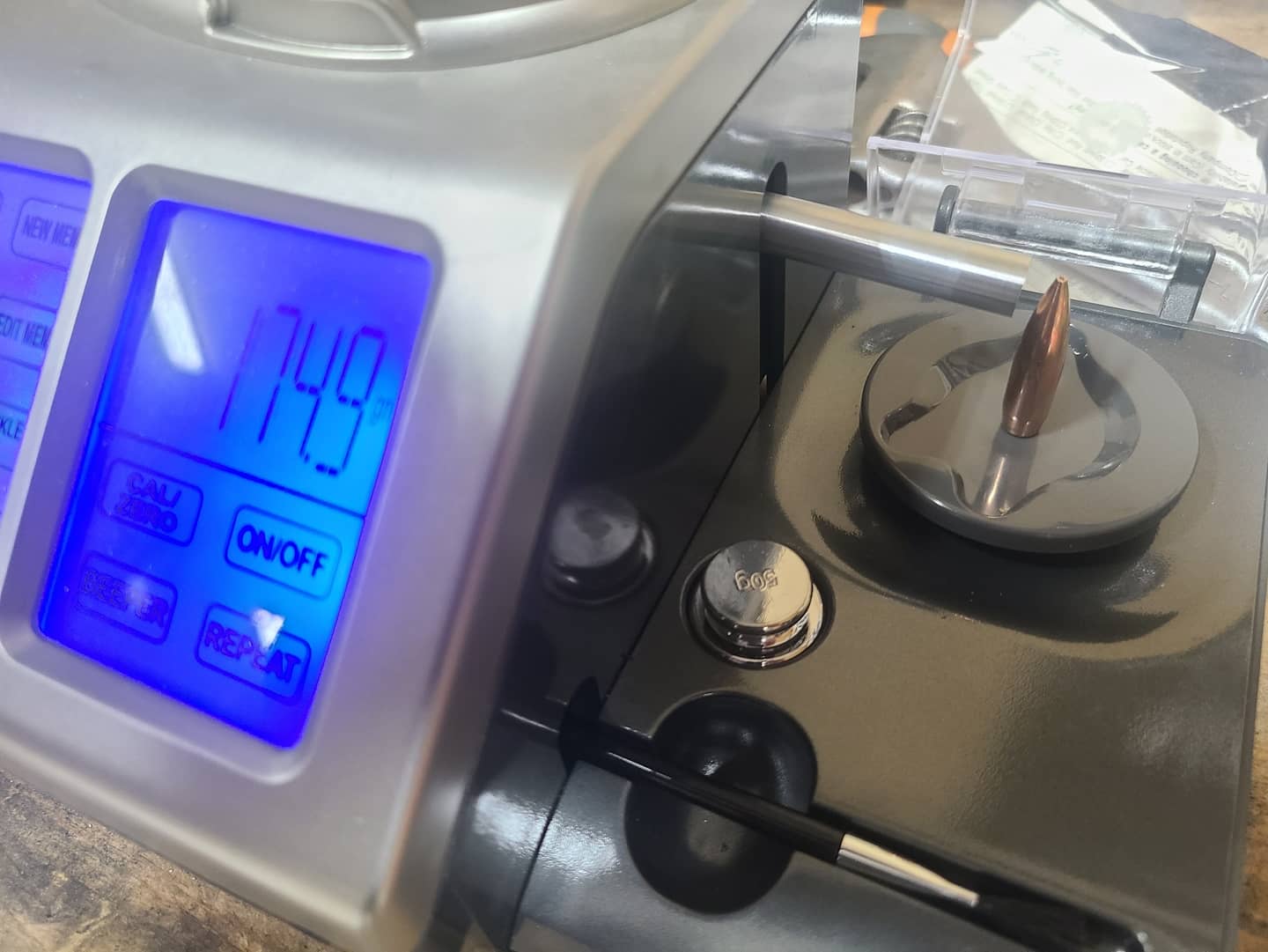
JWT for TTAGI am interested in guns. I am fascinated by cartridges. I like the Winchester “Improved Mauser” action. I am enamored with the 7mm-08.
That’s probably why during a prairie dog hunt with Sierra this summer, I thought of the history and plight of the .308 175gr Sierra Match King bullet with nostalgia and melancholy.
1993 was a rough year. The Brady Bill was signed into law, Islamic fundamentalist terrorists first bombed the World Trade Center, the ATF murdered a bunch of people in Waco, and Beanie Babies were popular.
On the plus side, this gawky kid from the tiny town of Dripping Springs, Texas started college where the female to male ratio was almost 4:1 and the United States Marine Corps adopted the M118 Special Ball Long Range cartridge for their 7.62×51 NATO chambered rifles. The M118LR was born.

Sierra built the 175gr boat tail hollow point (BTHP) round for the cartridge, named the Sierra Match King (SMK). Although the propellant and primer has changed for the M118LR over the decades, the bullet didn’t. The performance of that bullet, along with the well-deserved reputation of the USMC Scout/Scout-Sniper and marksmanship teams ensured the round became synonymous will long-range shooting.
Since then, that 175gr SMK has been around the world, punching holes in paper and Pashtuns alike. It’s been chambered in bolt guns and semi-autos. Its performance and relatively low cost have made it the go-to bullet for civilian and military shooters alike for decades now.
More perfect bullets than the 175gr SMK exist. There are rounds with more polished jackets, more consistent meplats, and more consistent dimensions (at a cost).

There are also quite a few bullets of the same caliber and of similar weight with higher ballistic coefficients. Take, for example, the Nosler 175gr RDF, with a G7 BC of .270, the Berger 175 gr Match MTLR with a G7 of .264, or the Hornady 178 gr ELD-M with its very slick .275.
The big advantage there is that the higher BC allows the shooter more error when judging wind at long ranges. And everybody misjudges wind. Some of us just much, much more than others.
The downside is that those bullets often require higher twist rates or have a narrow Cartridge Overall Length range to fire consistently. The SMK doesn’t. A 1:11″ or 1:12″ twist rate will stabilize the SMK just fine, which is why so many military rifles continue to be chambered with these twist rates.
A 1:12 twist rate existed long before the SMK bullet or the M118LR cartridge. We see it on US semi-automatic battle rifles going all the way back to the Vietnam war. Back then they shot a 173 gr FMJBT. I imagine that twist rate was considered when making the SMK, and then the ubiquitous use of the M118LR and the SMK that sits atop it continued to drive the 1:11 to 1:12 rates, but this is purely speculation.
When FN released their SCAR 20S, they put in the same 1:12 twist rate that existed on their previous military-only version Mk20 SSR. That rate was chosen because the bullet the military wanted to shoot, the 175 gr SMK, stabilized just fine at that rate. Civilians, who previously demanded a rifle just like the one the military used then wanted to shoot heavier bullets or rounds with a higher BC than the SMK, so the newer versions of the 20S sport the faster 1:10 twist rate.
Out of curiosity, I grabbed a box of 100 bullets and got to testing them.
A buddy of mine has a shop with a dial indicator used to measure concentricity. I measured a few bullets, but got the same result for all of them. The result was all zeros, meaning that the three zeros right of the decimal place that I could measure weren’t precise enough to give me a solid reading.

Using a Lyman digital powder scale, I weighed each of the bullets…all 100 of them. The lightest round measured 174.6. grains. The heaviest round measured 174.9 grains…and almost all of them weighed 174.9 grains. There were so many 174.9 rounds that, when measured to the nearest tenth of a grain, both the median and the mean were 174.9 grains.
One of the very nice things about 175 gr SMK is that it has been around for a while and a large amount of data is readily available for it. If I plugged a G1 BC of .505 into my ballistic calculator, and shot out to 800 yards, I’d get an estimated 229″ of drop. But that’s wrong. In reality, my bullet is only going 2,437 fps from that Remington 5-R‘s barrel (measured at the time of testing), and all of my rounds are landing just a little bit off, considering this gun and ammunition’s 1/2 MOA precision capability.
Looking at Sierra’s published data, my round is going much slower than the 2,800 fps that .505 BC is based off of. Using the correct .496 and .495 numbers, I arrive at 236″ of drop, which is where my bullet is actually landing.
If I wanted any additional data about the SMK, including applications, performance, really anything at all, I could call the Sierra Tech line at 800-223-8799 five days a week, 7am-7pm. That’s a real thing. You can call their tech line and speak to an actual person who actually knows about the bullets.
I had no reason to do so other than to just verify that it has some value, and yeah, there are really people who pick up the phone and can answer questions. Sierra isn’t the only bullet company to have technical/product support. Most do. But few have technical support phone lines available and staffed so well. And none that I know of with such a large and varied production line.
There are some smaller companies that supply this kind of customer service, like Berger Bullets. When that company first started gaining traction, my emails were promptly and comprehensively answered by Brian Litz. Back before ballistic applications included a “Litz” category for BC, some of my computations had “Per Litz” listed next to them, because those are the values he included in his emails to me. Two of those is the .243 G7 BC of the 175gr SMK. That’s right, no matter who you are and what bullets you make, you’ve spent some time on the Sierra Match King.
All that, and putting so so many of them through metal tubes, is why I am so nostalgic for the 175 gr SMK. My melancholy comes from the realization that the 175 gr SMK’s reign is near its end.
The 6.5 Creedmoor already been adopted by SOCOM, but FN and others are offering some of their previosly 7.62 NATO only machine guns in the 6.5 Creedmoor as well.
That’s just an intermediate measure for some units while the real change is taking place. The new 6.8mm round and its parent super space cartridge are moving forward through the DoD systems and are destined to be the military’s new go-to for all things near(ish) and far(ish).
Eventually, civilians will follow suit, and the round once used as the standard for long-range military shooting will go the way of black powder and metal butt plates.
Which means I’ll still be shooting it, right next to whatever new X.fancymm intergalactic telescopic polymer cartridge was just released to the inner planets.
“Gather round, kids, and let grandpa tell you about slow, fat bullets, and the men who loved ’em.”




WTF, over?
A Deja-Vu is a glitch in the Matrix You know.
I stayed at home and enjoyed whiskey last night, but I know I didn’t get that drunk.
Strange doing’s afoot jwm! Got my SSI 1-3 day’s early yesterday & we all got $600 pork checks this morning😑
What’s this ‘we’ shite? 🙂
You got paper checks? Or e-checks?
Enjoy your government free shit $600. Eventually you will pay it back to Uncle Sugar via increased taxes……..plus your previous $1200 free shit windfall…….plus you will pay at least double those amounts in taxes because half the population pay zero taxes. So you will be paying for their free-shit also. Enjoy!!!!
Enjoy your government free shit $600. Eventually you will pay it back to Uncle Sugar via increased taxes……..plus your previous $1200 free shit windfall…….plus you will pay at least double those amounts in taxes because half the population pay zero taxes. So you will be paying for their free-shit also. Enjoy!!!!
Apparently the site shit the bed last night and the powers that be are putting humpty together again.
Go home, site, you’re drunk.
New Years Eve party got out of hand.
Déjà vu
Aaaaaaaaaaannnnddd…. it’s gone!
😲💩
I came as close as I could to the M118LR using the 175gr. MK and VVN150. It shot great at 600 yards out of my Savage 10FP, although I prefer the 200gr. MK and 4350 out of my .30-06 Savage 112BVSS.
The Sierra Match King 175 grain was always the (expensive) standard for a production .308 match grade cartridge.
It shot 2 m o a groups in my Federal Ordnance M 14.
However my rifle liked Perfecta 145 grain .308 and shot it into 2 m.o.a. groups.
Just in a totally different point of impact.
So my scope is dialed in for Perfecta, and I have 1,000 rounds of it that cost exactly half of what the SMK cost in those pre panic days.
Isn’t Perfecta loaded ammunition by Fiocci? Do they sell just the projectile?
Ob-wan….life changes. With that level of nostalgia lamenting and preventing change, you would never have even had the 175SMK…or smokeless powder. You’d probably still be euphorically throwing smooth rocks from the Tigris shore. You should read the book by Spencer Johnson, MD titled “Who Moved My Cheese”…..and, then, move onward and upward. 🙂 🙂 :).
When learning to load (about 5 years ago) I got familiar and also learned to love the 175 smk. I even made a few 1000 yard shots on steel with rounds I loaded and using a suppressor I put together. Space cartridges aside… It’s not too difficult to make a 308 subsonic load that sounds like a cough.
308… Because good enough and big enough is better than the perfect cartridge you don’t have. And the information availability like you mentioned.
Yes, good beats perfect every time. Because only the LORD God is good, and we are not.
The 30 caliber bullet and the SR71 Blackbird were both designed without the use of modern computers. Someone way back then knew what the hell they were doing.
Pretty sure that would be the “30 Army”, 1890(ish). Many small bore, as the .308″ bullet was considered at the time, would rapidly follow.
Mr. Taylor, I concur. There was something telling about the intellect of a man who designed things with a slide rule and not a computer. As an example, I still use cassette tape players in my truck and cars. Why?. Because 30 years later, they still work. I always look at “New and Improved” with skepticism. Not against technology, but it is usually designed for short term use with lack of quality and no thought of long term use. I deal with a lot of new internal combustion engine designs. All today are built mostly for fuel efficiency and high rpm power, most have expensive repairs before 150, 000 miles of use. Now say take a 1967 Chevy 283 two barrel, correctly rebuilt, gets 23 mpg and at 150K miles, may need a $25 dollar water pump or a $19 carb kit. Just my opinion, newer is not always better, just building easier to use products for increasing dumber consumers. Just my opinion.
Comments are closed.